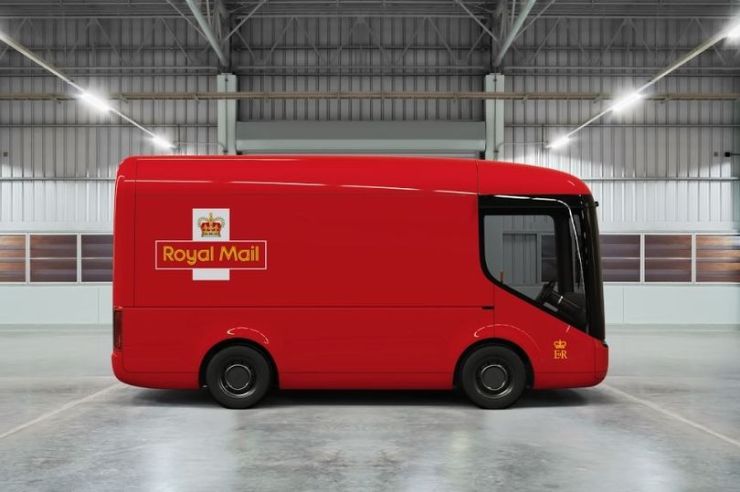The Royal Mail is testing electric delivery vehicles to replace their 49,000 vehicle fleet with an eye towards lowering annual maintenance and fuel bills, and to help improve air quality in UK cities.

- Ranking 1000+ on the cuteness scale, these 3.5 tonne Royal Mail electric delivery trucks made by Arrival have a 100-mile range and feature zero emissions and no noise. Image courtesy of Royal Mail.
Royal Mail is testing-out a range of electric delivery vehicles to complement and eventually replace their 49,000 vehicle fleet. The smallest of these vans is pictured above with three (of the one-hundred on order) already delivering packages from the Mount Pleasant Mail Centre in London.
The new trucks come in three different payload ratings and the larger trucks are scheduled to begin operations later this year.

- Arrival’s 6-tonne electric van at the Banbury, Oxfordshire assembly plant which is presently undergoing trials in London. Image courtesy of Royal Mail.
Three 3.5 tonne electric trucks, three 6 tonne, and three 7.5 tonne electric trucks will be tested in 2017.
“Royal Mail is delighted to be collaborating with Arrival and pioneering the adoption of large electric commercial vehicles. We are pleased to be the first fleet operator to take delivery of and trial these new larger payload vehicles which will complement the 100 electric vans we recently ordered. We will be putting them through their paces over the next several months to see how they cope with the mail collection demands from our larger sites.”
“Royal Mail is trialling a variety of vehicles to see which work best for us and are keen to share our experience with other fleet operators who may be considering introducing electric vehicles. We have trialled electric trucks before but not of this type of design and look forward to see what additional benefits they can bring to our existing fleet of around 49,000 vehicles.” — Paul Gatti, Royal Mail Fleet’s managing director
In congested and heavily polluted cities like London, switching from loud and smelly diesel-engined trucks to electric trucks can contribute to better air quality, as most of the fine particulate and soot found in city air is caused by diesel vehicle emissions.
“We are thrilled to partner with Royal Mail using our electric vehicles. Cities like London will benefit hugely from a switch to electric, in terms of both pollution and noise. Most importantly we are priced the same as diesel trucks removing the main barrier to go electric.” — Denis Sverdlov, CEO of Arrival
Formerly known as Charge Automotive, Arrival’s new 110,000 sq ft factory is located in Banbury, Oxfordshire.
Arrival says the trucks are built using, “revolutionary ultra-lightweight composite materials that significantly reduce the weight of the vehicle and by combining this technology with Arrival’s custom built hardware, including power electronics and motors, the cost of operating has been reduced by more than 50%.”
The company also says it’s pursuing autonomous driving technology and that the new trucks are ‘autonomous-ready’.
This follows an announcement by the Royal Mail in July that they’ve also purchased 100 Partner electric minivans (made by Peugeot) for use on regular delivery rounds.
But what’s the real story here?
The real story is that 49,000 Royal Mail vehicles are going to need replacement within the next ten years. And not only the mail service, but hundreds of thousands of ambulances, courier company vehicles and private companies that haul their own freight will need replacement vehicles within ten years — and all of them could be built at the Arrival plant in Oxfordshire.
To say nothing of the number of delivery vehicles that will need replacement within ten years in every Commonwealth nation and throughout the rest of the world.
As much as I’m a fan of the Mercedes-Benz Sprinter van (and they are a great vehicle by any standard) these new Arrival vans come without a clattering and smelly diesel engine. And in today’s congested and polluted cities, that’s everything.
If Arrival plays its hand properly, it will become the Apple or TESLA success story of the decade.















